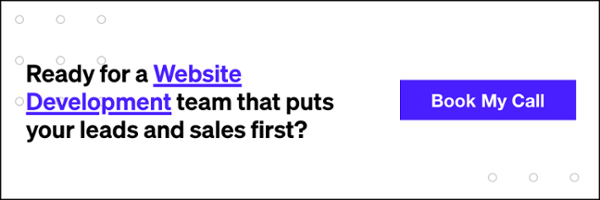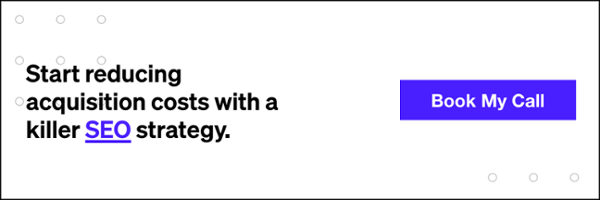Search Engine Starter Guide for Launching a New Website
You’ve finally taken the plunge and decided to build a website to grow your business online. Great idea! The digital space is bursting with opportunity with millions of potential customers at every corner. But, where do you start?
First thing’s first: you must register your domain name. What’s a domain name? A domain name is how people identify you online. It usually represents the name of your company. For example, Power Digital’s domain name is powerdigitalmarketing.com. There are a host of companies you can use to register your domain name such as www.godaddy.com and www.register.com.
Once you register your domain name, you will want to find a server to host your website on. A few of these websites include www.godaddy.com and www.dreamhost.com. Once you’ve found a server, you can start building your website. However, before you start with development, it is vital that you make sure that your site is easy for search engines such as Google to crawl and rank. How do you do this? By optimizing it using SEO best practices, of course!
How To Do SEO
It is important to note that doing SEO on your website takes a lot of time. It does not happen overnight, which means results are rarely immediate. However, the first steps you take after you launch a new website can have a significant impact on the website’s potential to rank in Google search for its target keywords and start bringing in traffic, leads, and revenue.
From an SEO perspective, it is important that you get things right from the start of a website build. If you keep SEO in mind, you will save yourself many hours of work further down the line having to fix a website that has many errors, due to a poorly structured site. For a list of errors, you can get you should check out my blog on web crawl and errors guide.
I have structured a search engine optimization starter guide which consists of a number of steps to take whenever you launch a new website to make sure it has the best chance of ranking for the keywords you want to target from organic search traffic as possible.
Think Strategically When Structuring Your Website
The structure of a website has a huge impact on its ability to rank well. To rank effectively for your target keywords, you need to structure your website so that each page targets its set of keywords.
Let’s say you are launching a website for a golf shop. You sell a variety of different golf equipment, from golf shoes and clothes to golf clubs and bags. The aim is to have each category rank for its target keywords.
This means breaking down your website’s structure into categories, with each category aimed at a different search keyword. Below, I have included an example of a site structure, with the homepage targeting the primary keyword (“Golf Equipment”) and subpages for each secondary keyword:
- Golf Clubs
- Golf Shoes
- Apparel
- Golf Balls
- Golf Bags/Carts
- Accessories
Setting up your website structure strategically has many benefits. It clearly demonstrates your core offerings and helps identify all the target keywords for each page on the site, rather than having one page targeting multiple keywords.
It also allows you to break down each category further into subcategories. For example, there are so many different golf clubs available to golfers, including:
- Drivers
- Fairway Woods
- Iron Sets
- Wedges
- Putters
- Mens
- Womens
- Left Handed Clubs
- Right Handed Clubs
These can be broken down into subpages using specific keywords. This structure lets each page target its own primary keyword as well as a set of secondary keywords. Having a website structure like this, with each page dedicated to its own set of keywords, improves the relevance of the page and boosts your chances of the page being found in search engines.
Create High Quality Content
High-quality content is vital for on-page optimization. The content on a web page must be engaging and informative in order for your website to rank. However, just as important as the quality of the content is how you incorporate your target keywords within the content. The target keywords should be strategically sprinkled throughout the content.
Using your keywords sparingly, rather than excessively, helps the content sound natural. In order to incorporate your target keywords and write fluid content, try adding your primary keyword to the H1 tag of the page. Keep in mind that creating high-quality content takes time, effort, and a lot of skill. This isn’t a job for an unqualified intern.
Use a Primary Keyword in the Title Tag
A title tag is one of the most crucial ranking factors in the eyes of Search Engines. The title tag is what appears in the SERP. All website pages must have optimized title tags that accurately describe the page content.
A suitable title tag for a golf shop would be:
Golf Equipment – Discount Golf Clubs & Bags | Company Name
A title tag like this describes the content of the page, informing users that there is a discount on golf clubs and bags, while also including the target keyword (“Golf Equipment”).
Have an Engaging Meta Description to Boost the Click-Through Rate
The meta description is a short blurb about what the page is about. Meta descriptions appear in the SERP below the page URL. While not a ranking factor, meta descriptions are still important to have from a click-through perspective.
Meta descriptions act like the back cover of a book. It tells the user what they can expect to see on the page and convinces them why they should click through.
Example:
(Company name) is the world’s leading golf superstore for golf equipment such as clubs, bags, accessories & apparel at discounted prices. FREE delivery!
Overview in the SERP:
Create an XML Sitemap to help Search Engine Crawl your Site
An XML Sitemap is a file that contains a list of URLs on your website that you want search engines to index crawl. For more information on XML Sitemaps visit our blog on Technical SEO.
Setup Google Analytics and Submit the Website to Google Search Console
Once all of the above has been complete, you should install Google Analytics. Google Analytics is a free software that shows how your website is performing. It allows you to see how visitors engage with your site and how they got to the site.
The Search Console is a platform for webmasters. It provides valuable data about how your website performs in organic search – from crawl errors on your site to clicks and CTR for each keyword.
To add your website to Google Search Console, visit Google.com/Webmasters. Once your site is linked to a Google Analytics account, you can start using Search Console without any additional verification process.
Build Links
Once you have taken care of your on-page optimization and have set up Google Analytics and Search Console, the next step in the SEO process is link building. A great place to start building links to your website is to reach out to your friends and colleagues and ask them to help promote your website via social media.
Link building can be tricky. It is important to build links with bloggers and sites whose content is relevant to your website. For more information on link building check out this blog post on to build links or not to build links.
Monitor Search Rankings
It’s simple: as you begin ranking higher for specific keywords, you will start to see more traffic to your site. The more traffic you get to your site, the more leads and revenue you will get. That’s why it’s crucial to monitor whether or not your SEO efforts are bringing in results.
Wrapping Up
SEO is a long process, and with Google algorithms constantly changing, it’s never enough just to launch a website and wait for leads and revenue to come through. Your website will have to be updated on a regular basis to keep your content fresh. With SEO, every day is a challenge as you are constantly trying to improve ranking for keywords your products or services are associated with. If you’d like to rank for keywords that are highly competitive, a long-tail SEO strategy is required with clearly defined goals.
Follow the Power Digital SEO starter guide and if you need some guidance on any of the above, Power Digital are experts in the area. We will take your business to the next level with an SEO website check. I hope you have enjoyed my SEO guide and optimization tips.



















